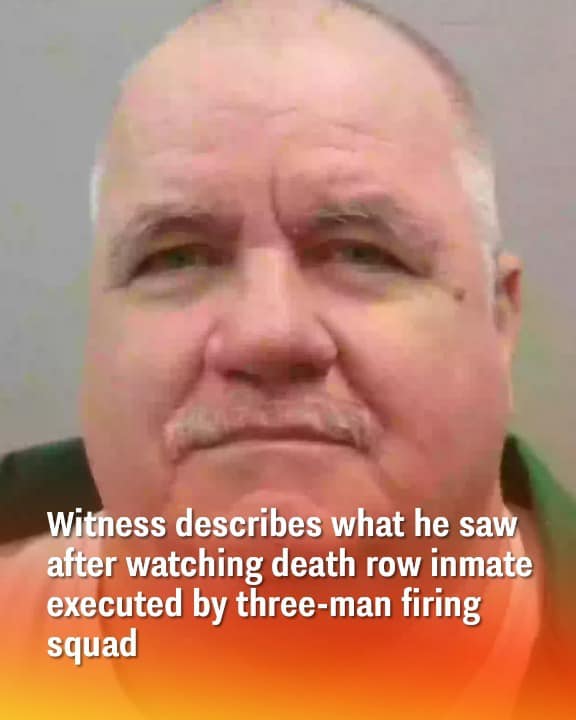On Friday, March 7, 2025, a rare and solemn event unfolded in South Carolina that will be remembered for years to come. Brad Sigmon, a 67-year-old inmate on death row, was executed by a three-man firing squad—a method not seen in the United States for 15 years. Sigmon, convicted for the brutal 2001 murders of his ex-girlfriend’s parents, chose this method over the more common lethal injection.
He expressed deep concerns that the drugs used in lethal injection might fail to work as intended, potentially prolonging his suffering. In his own words, he feared being “burned and cooked alive” by an electric chair-like scenario that might result from delays in the injection process.
This comprehensive account details Sigmon’s final moments, the execution process observed by seasoned reporters, and the broader implications of such a method in today’s legal and ethical debates on capital punishment. Drawing on the insights of veteran journalist Jeffrey Collins—who has spent more than two decades covering executions in South Carolina—this article provides a window into the stark realities of state-sanctioned death, exploring the physical, psychological, and moral dimensions of this irreversible penalty.
Brad Sigmon’s journey to death row was marked by a violent and tragic series of events. In 2001, Sigmon committed a heinous crime by brutally murdering David and Gladys Larke, the parents of his ex-girlfriend. Using a baseball bat as his weapon, the assault was both premeditated and shockingly violent. The gruesome nature of the murders, combined with the subsequent legal proceedings, culminated in Sigmon receiving the death penalty.
For the victims’ family and the community, Sigmon’s conviction was a necessary measure of justice. Yet, for Sigmon himself, the prospect of a prolonged and agonizing death—especially via methods like lethal injection—became a source of deep personal anxiety. His decision to opt for a firing squad was rooted in a desire for immediacy and a belief that it would spare him a drawn-out, torturous end.
While most inmates on death row have historically chosen lethal injection as their method of execution, Sigmon’s case stands out because of his explicit preference for the firing squad. His rationale was simple yet profound: he distrusted the drugs used in lethal injections, worried that any malfunction or delay could result in unnecessary suffering. Sigmon viewed the firing squad as a method that, though violent and immediate, promised a swift and unequivocal end.
South Carolina’s legal framework still permits the use of a firing squad in capital cases, although it has not been employed for the past 15 years. By choosing this method, Sigmon not only highlighted his personal fears but also inadvertently brought renewed public attention to an execution style that has largely faded from the national consciousness.
Veteran reporter Jeffrey Collins, with over 21 years of experience covering executions in South Carolina, provided a detailed account of the day’s events. On the morning of March 7, Sigmon was led to the execution chamber—a cold, sterile environment designed to emphasize the clinical nature of the procedure. Collins described the meticulous setup, emphasizing every detail:
- Appearance and Attire: Sigmon was dressed in a standard black jumpsuit and wore distinctive black, crocodile-like shoes. His outfit was chosen not for theatrical effect but as part of the standard protocol that strips away individual identity and underscores the finality of the moment.
- Restraint System: Sigmon was securely strapped into a specially designed metal chair. A harness was fastened across his torso, additional straps were placed over his head, and his ankles were bound with shackles. These restraints were not only a safety measure but also a somber reminder of the gravity of the proceedings.
- The Target on His Chest: Perhaps the most striking detail was the white target affixed over Sigmon’s heart, complete with a red bullseye. This target, clearly visible once the curtain separating him from the firing squad was drawn back, served as a focal point for the execution—a macabre symbol of the finality of his sentence.
